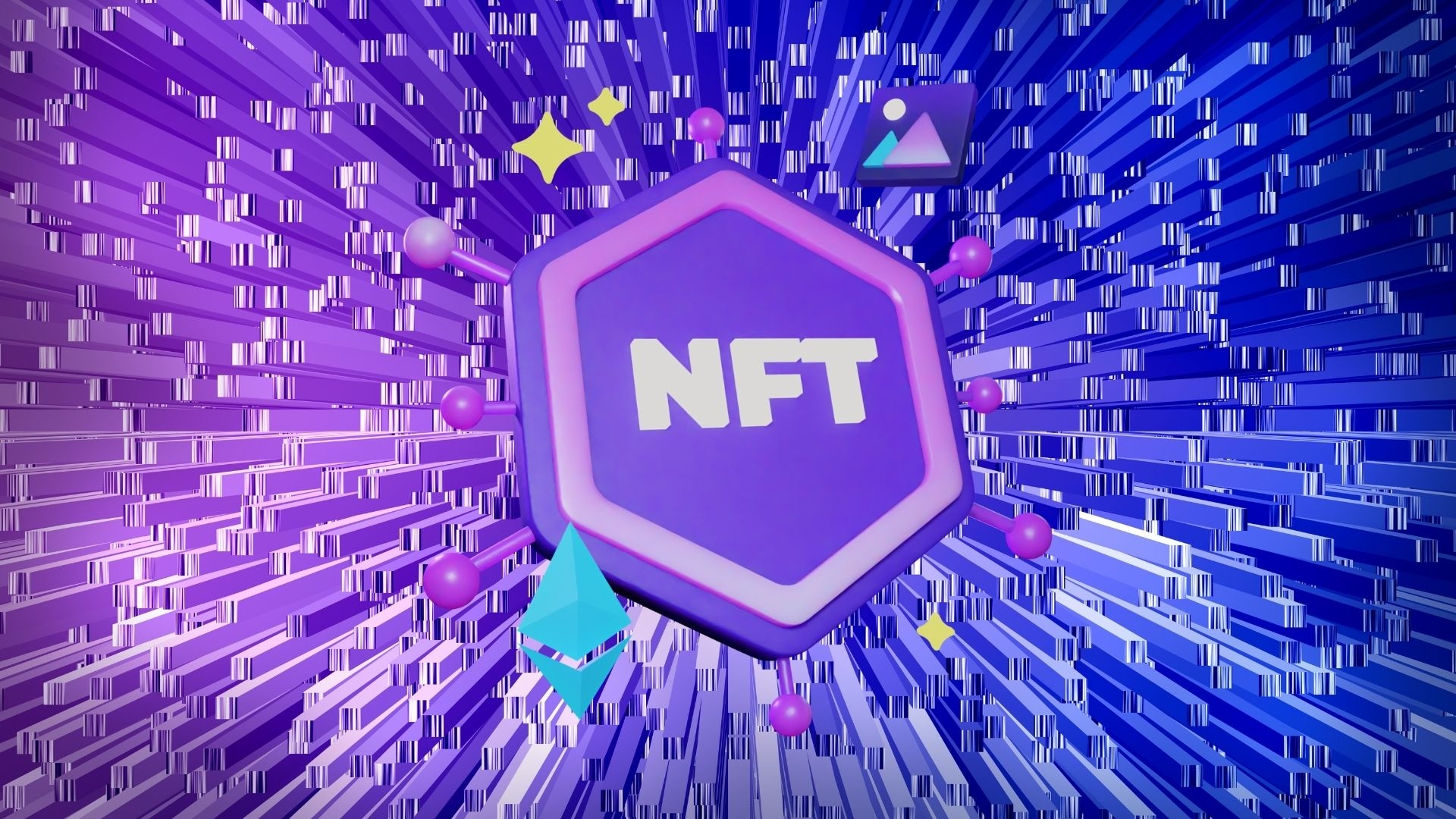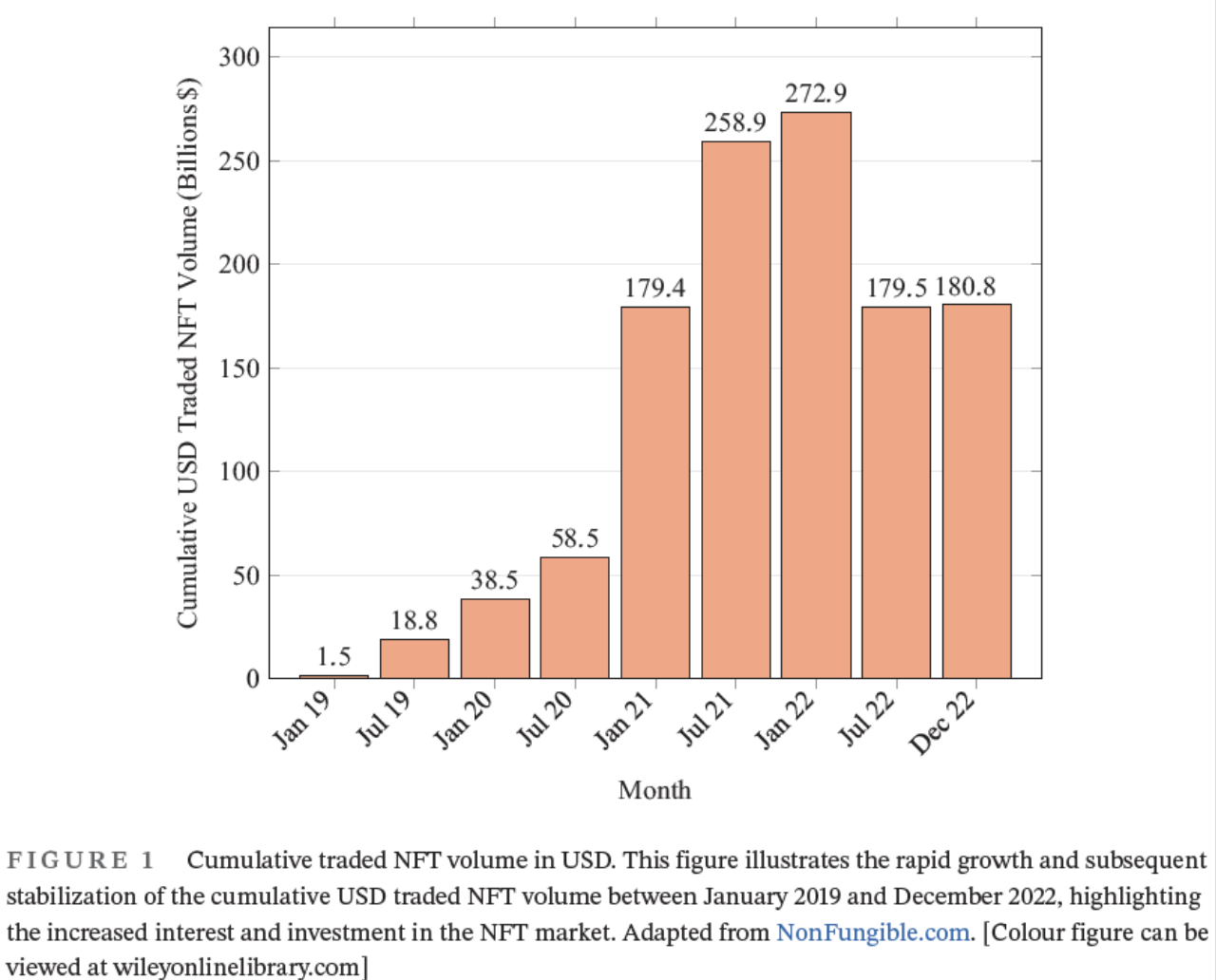Comments
- No comments found

Non-Fungible Tokens (NFTs) have taken the digital world by storm, offering a unique way to buy, sell, and trade digital assets.
But what exactly are NFTs, and should you care about them?
I’ve had a hard time believing that non-fungible tokens (NFTs) matter in an important way, but enough people seem to be paying attention to them that I feel some need to do so as well. Roman Kräussl and Alessandro Tugnetti provide a useful overview of the state of play in “Non-Fungible Tokens (NFTs): A Review of Pricing Determinants, Applications and Opportunities” (Journal of Economic Surveys, April 2024, pp. 555-574).
A non-fungible token is a digital asset with a key characteristic: The ownership of the digital item is provable and traceable on a blockchain. However, it is not a digital currency like Bitcoin or Ethereum. Instead, as Kräussl and Tugnetti point out, an NFT can come in five different forms: Gaming, Collectibles, Metaverse, Utility, Art, and Metaverse. Here are their descriptions:
In the realm of gaming, NFTs represent assets that can be utilized within video games, with their elements stored on the blockchain. This offers a significant departure from traditional video games, as players gain real ownership of in-game assets through the purchase and sale of NFTs. Gaming NFTs have demonstrated a remarkable ability to engage active users, resulting in the highest participation rates compared to other categories. This high level of user involvement translates
to continuous exchanges between players, making the gaming sector highly liquid. … Examples of popular gaming NFTs include Axie Infinity, NBA Top Shot, and CryptoKitties.
Not much unlike physical collectibles, NFT collectibles are released in collections, or series, which represent variations of the same image, video, or other media. The characters in the Cryptopunks project, for instance, differ from each other in certain attributes that also make the price vary: man/woman, human/alien/monkey, and presence or absence of accessories. NFT collectibles record the highest level of transactions though the number of active wallets is much lower than that of gaming NFTs. … [T]his concentration of the market is due to a few large-value transactions. Nadini et al. (2021) show that the top 10% of buyer–seller pairs contribute 90% to the total number of NFT transactions. Examples of NFT collectibles are CryptoPunks, the Bored Ape Yacht Club (BAYC), and Azuki.
NFT utilities, the third main group, are assets that provide utility in the real or digital world through the blockchain. In other words, utility tokens give their holder consumptive rights to access a product or service (Howell et al., 2020) so that their use is not directly related to the need to collect or play with the token of interest. In particular, because these tokens serve as the means of payment on a platform or offer access to the firm’s services, they possess utility features (Gryglewicz et al., 2021). Utility NFTs comprise different categories: finance, health, supply chain, or digital ID. The most popular NFT utility projects are VeeFriends (which grant access to the VeeCon, a multi-day event exclusively for VeeFriends NFT holders), Ethereum Name Service (ENS, where users can purchase and manage domain names for their digital assets), and Nouns.
Art NFTs can be defined by exclusion from the previous sectors. Art NFTs are assets with an artistic function that have not been released in series (as could happen for collectibles) and that cannot be used within any type of video game hosted on the blockchain. This type of token has brought many innovations to the art market, especially due to the easing of barriers to entry this opaque market. Everyone can create and sell their works on different platforms in a much shorter time than on the traditional art market, with an average time between purchase and resale in art NFTs of just 33 days versus the average resale period on the traditional art market of 25–30 years (McAndrew, 2023). Furthermore, art NFTs have addressed issues that have affected the traditional art market for decades, such as provenance, title, authenticity, and a fairer distribution of income. The creation of communities by the artists themselves via social networks, such as Twitter gravitating around their NFTs collections, have allowed for a much deeper involvement of buyers. … Main examples of art NFTs are ArtBlocks, that is, tokens representing generative art through an algorithm, SuperRare, and The Currency by artist Damien Hirst which are 10,000 NFTs corresponding to 10,000 physical artworks stored in a physical vault.
The fifth main group, Web3 or Metaverse, can be defined as an extension and grouping of the previous ones. The Metaverse is a virtual universe accessible through a computer screen, laptop, virtual reality (VR), or any other digital system. Users who access this world can create their virtual avatar and interact with the surrounding reality, including other users. They can purchase virtual plots of land within the Metaverse to create their own organizations and host events. In many cases, firms have established virtual businesses and created a space where they can offer goods and services, promote their products and organizations, and hold virtual events (Goldberg et al., 2021). Some examples are the game developer company Atari in Decentraland, Adidas in The Sandbox, and Cryptovoxels.
The list helps to clarify for me why NFTs don’t play much role in my life. I’m not a gamer. I don’t play in the multiverse. I don’t do collectibles. When we get art, it’s to hang on the wall. I suppose at some point there might be an organization where a utility NFT works as a form of membership to an organization that matters to me. For now, annual membership cards for certain museums and standard online ticketing seems to be working for me just fine. I have no desire to diversify my assets into NFTs for either financial or aesthetic reasons.
But as I am continually reminded in the modern world, my tastes are not universally held. In the meantime, the NFT market seems to have turnover of a few hundred billion dollars per year: apparently, much of this is related to gaming or collections.

Timothy Taylor is an American economist. He is managing editor of the Journal of Economic Perspectives, a quarterly academic journal produced at Macalester College and published by the American Economic Association. Taylor received his Bachelor of Arts degree from Haverford College and a master's degree in economics from Stanford University. At Stanford, he was winner of the award for excellent teaching in a large class (more than 30 students) given by the Associated Students of Stanford University. At Minnesota, he was named a Distinguished Lecturer by the Department of Economics and voted Teacher of the Year by the master's degree students at the Hubert H. Humphrey Institute of Public Affairs. Taylor has been a guest speaker for groups of teachers of high school economics, visiting diplomats from eastern Europe, talk-radio shows, and community groups. From 1989 to 1997, Professor Taylor wrote an economics opinion column for the San Jose Mercury-News. He has published multiple lectures on economics through The Teaching Company. With Rudolph Penner and Isabel Sawhill, he is co-author of Updating America's Social Contract (2000), whose first chapter provided an early radical centrist perspective, "An Agenda for the Radical Middle". Taylor is also the author of The Instant Economist: Everything You Need to Know About How the Economy Works, published by the Penguin Group in 2012. The fourth edition of Taylor's Principles of Economics textbook was published by Textbook Media in 2017.
Leave your comments
Post comment as a guest